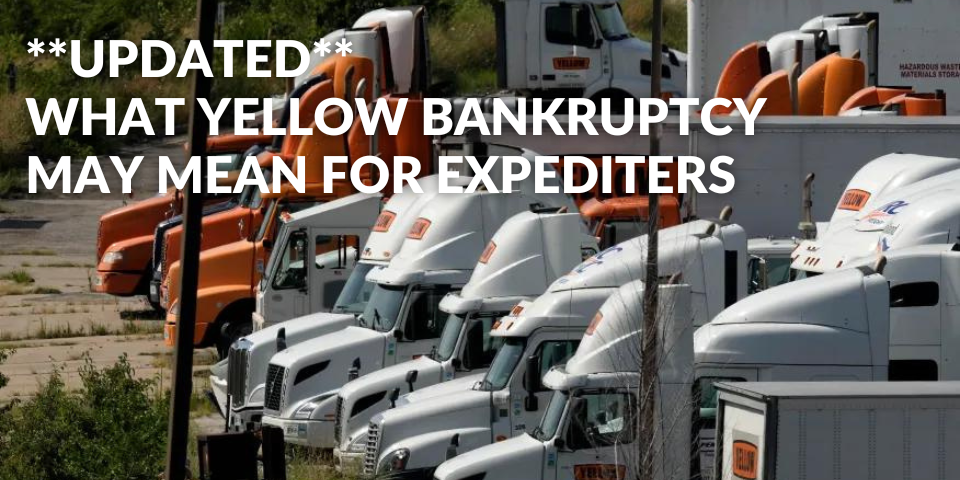In The News

*UPDATED - Yellow Filing for Bankruptcy - what it can mean for Expediters
*An update to our story regarding Yellow Corp.
Trucking company Yellow Corp. has declared bankruptcy after years of financial struggles and growing debt. The Chapter 11 bankruptcy was filed on Sunday, and it comes just three years after Yellow had received $700 million in pandemic-era loans from the federal government. However, the company had been in financial trouble long before that as industry analysts have routinely pointed to poor management decisions dating back decades.
* * *
When the ripples start to become waves, it’s time to head for the shore.
It’s been reported in recent weeks that Yellow Corp, formerly known as YRC Worldwide, has been preparing to file for bankruptcy after failing to reorganize and refinance over a billion dollars in debt. And it appears as if, sooner rather than later, the idea of the third-largest LTL (less-than-truckload) carrier in the United States is indeed barreling toward oblivion.
Earlier in July, Yellow halted a threatened strike by 22,000 Teamsters-represented workers and employees and recently stated that it was looking into ways to divest its third-party logistics company.
So, what type of impact could the loss of a freight carrier such as Yellow have on the rest of the trucking and expedite industry?
How Did It Come To This?
After years of financial struggles, and seeing customers leave in large numbers, Yellow is reportedly preparing for bankruptcy due in part to Yellow's inability to refinance almost $1.3 billion of debt that’s due to be repaid by 2024.
Part of that debt stems from a $700 million pandemic relief loan that was provided in 2020 by the United States government in exchange for a 30% stake in the 30,000 employee Nashville, Tennessee-based company.
The company stated in June that the Teamsters Union was blocking restructuring and modernization efforts, known as “One Yellow”, which claimed was necessary to Yellow’s survivability.
What Happens Next?
It seems clear that Yellow has struggled to properly maintain its finances for years, despite billions of dollars in worker concessions and hundreds of millions of dollars in bailout funding from the federal government.
With customers leaving, as well as reports of Yellow halting freight pickups in recent weeks, the impending bankruptcy would be the final nail in the coffin of one of the more prominent LTL carriers in recent memory.
What Can This Mean For Expediters?
In the traditional sense, LTL freight is typically a specific segment of the trucking industry that caters to customers by combining shipments from multiple, and different, shippers into the same trailer. But what happens when those options are no longer available to the shipping professionals? Can there be a trickle-down effect that could help boost freight availabilities for the smaller expedite carriers?
Expedite freight services, known for their rapid and time-sensitive deliveries, may initially be hit hard by Yellow's bankruptcy. As a major player in the industry, Yellow's absence could create a void in expedite shipping capacity as shippers who’ve typically relied on Yellow's expedite services might face limited options and increased competition for available carriers, leading to higher costs and potential delays in shipments.
Bad for the overall shipping community. Potentially good for the expedite community.
However, smaller expedite carriers that have traditionally relied on Yellow as a partner for handling overflow or backhaul loads might also be left scrambling to fill the gap. This could either exacerbate the scarcity of expedite freight capacity within the market, making it challenging for time-critical shipments to reach their destinations promptly. Or it could potentially open up more possibilities for expedite carriers to secure additional freight, and new customers, while providing owner operators and independent contractors some much needed financial relief as more potential load opportunities become available.
